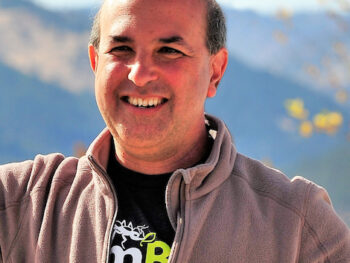
Some novel approaches from our customers
At the Association for Biology Laboratory Education (ABLE) conference this past summer in Boston, Dr. Andrew Whiteley from UMass, Amherst, presented a workshop demonstrating how he has been using SimBio Virtual Labs as part of a Team-Based Learning (TBL) approach in one of his classes. (We will post his paper as soon as the workshop proceedings are published.) For me, one of the fun things about assisting Andrew with his workshop was meeting a number of faculty using our labs in all kinds of creative ways. One interesting example was from Scott Chirhart of Centenary College of Louisiana.
Scott Chirhart’s Evolution class historically did not have a lab component, but a few years ago he was asked to add one, and to make sure it included an oral presentation requirement. He turned to SimBio’s evolution labs for the hands-on component of the lab, and added a novel extension to the SimBio activities. In his course, pairs of students are directed to select one of their assigned SimBio labs and to design a new “mini-lab” using the lab’s simulations, but investigating some aspect of evolution not directly addressed by the lab. His students then present this new lesson to the class.
This approach has worked well in part because Scott selected evolution labs like Mendelian Pigs, Finches and Evolution, and How the Guppy Got Its Spots, which are all built around fairly complex but easily manipulable simulations and include open-ended “playgrounds” designed to encourage students to fiddle around. This gives students a rich set of tools to choose from in building their own mini-labs, and the students respond very positively to the experience. For those of us at SimBio building these Evolution labs, hearing about uses like this is very rewarding. Our vision is to make labs that encourage students to play and explore, and part of that is including flexibility to do things that we didn’t think of ourselves. It’s great to see this actually happening.
I asked Scott if he would share more details of how he sets up the class to have students build their own mini-labs as a capstone exercise. He generously agreed. When uncompressed, Chirhart_Docs.zip includes a document with background on his approach and two examples of student projects from his class. Scott would probably be happy to provide further details to any other professors interested in adopting a similar exercise in their class.
If you have developed other novel ways to use SimBio’s modules in your teaching, let us know. We’re always looking for useful and interesting teaching tools to share!







